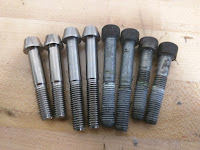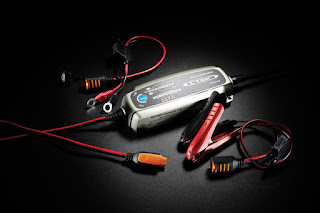We work hard to bring new products to market for our customers, but at times, keeping an existing product on the shelf can be a challenge. Suppliers throw us curve balls ocassionally which make us re-evaluate our current approach. Such has been the case with the Lotus Cup Air Box. We originally spec'd this box in both the Katana2+ kit and our Stage 1 Tune for the Elise/Exige. We liked this air box because being an OEM piece gives us several advantages when it comes to reliability and performance. Another benefit of this air box is that it flows more air than stock but maintains a stock MAF signal since the MAF housing is unchanged.
Well, as happens sometimes (and probably more often moving forward), the Cup Box is becoming hard to source and may not available in the foreseeable future. This means we either needed to stop selling our extremely popular supercharger kit, or come up with an alternative. Our idea was to partner with our friends at K&N to see how a drop in filter in the stock air box compared to the Cup Box and OEM air filter. We do not just push things to market and call it good, we test and validate everything we sell. Being an engine part, it was especially critical to actually track test the effect of switching the K&N drop in solution.
 The White Rascal (Art Car v2), already had a Larini race Exhaust Pipe, Cup Box, and Stage 1 Tune. So we needed to get a baseline number from this known good setup. We used an AiM EVO4 for data logging, and an AEM wideband in place of the second 02 sensor to see how the air fuel ratios were doing. All testing was done at Spring Mountain on their 1.5 mile track.
The White Rascal (Art Car v2), already had a Larini race Exhaust Pipe, Cup Box, and Stage 1 Tune. So we needed to get a baseline number from this known good setup. We used an AiM EVO4 for data logging, and an AEM wideband in place of the second 02 sensor to see how the air fuel ratios were doing. All testing was done at Spring Mountain on their 1.5 mile track.To analyze the data, we picked the back straight away of the track and focused on the AFR readings between 6400 and 7700 RPM. When we ran the naturally aspirated setup the readings were as follows:
Cup Box = 13.5-12.3
K&N = 13.5-12.36
| Screen shot of some of the data collected. |
 Since we verified our hypothesis that the K&N would flow similarly to the Cup Box, we were ready to put in the Katana with the K&N and go track test it. On the same part of the track in the same RPM range we saw the AFR go from 13.1 to 12.3. This track testing allowed us to verify the numbers but also put some miles on the car so the ECU could do some learning before the dyno test.
Since we verified our hypothesis that the K&N would flow similarly to the Cup Box, we were ready to put in the Katana with the K&N and go track test it. On the same part of the track in the same RPM range we saw the AFR go from 13.1 to 12.3. This track testing allowed us to verify the numbers but also put some miles on the car so the ECU could do some learning before the dyno test.We dyno'd the car a few days later and made 222 WHP . The dyno operator told us his dyno is reading about 5% low vs others but we will take the 222 number. For reference, this car made 187whp on the same dyno when it had the Stage 1 package and our engineer's stock car with the same miles made 177whp. So the Katana is netting about 45 WHP vs a stock car.
 |
| Dyno Graph of Katana |










